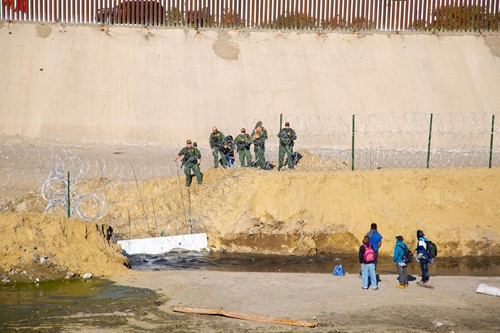
The International Organization for Migration (IOM) presented its annual report on the reality of migration on the planet (2021). There are many lessons to be learned from this excellent report that updates us on this complex reality. Latin America and the Caribbean is no stranger to this reality and migratory flows have become a priority issue for governments due to their human, social and economic implications. The report points out, for example, that the vast majority of people continue to live in the countries where they were born -only one in 30 are migrants. Of course, with the respective nuances between regions and countries. The estimated figure of migrants in 2020 is equivalent to 3.6% of the global population. https://worldmigrationreport.iom.int/
In addition, remittances are a key source of income for many migrant families and contribute to the growth of the Gross Domestic Product (GDP) of recipient countries. For example, the report points to a significant increase in remittances from $126 billion in 2000 to $702 billion in 2020. A considerable growth.
In terms of the shares of international migrants, the report confirmed that Europe and Asia hosted around 87 and 86 million international migrants in 2020, respectively, accounting for 61% of the total global migrant population; North America, almost 59 million international migrants, equivalent to 21% of the global migrant population; Africa at 9%; Latin America and the Caribbean at 5%; and Oceania at 3%. With regard to the population size of each region, Oceania, North America and Europe had the largest proportions of international migrants in 2020, with 22%, 16% and 12% of the total population, respectively. The proportion of international migrants was relatively small in Asia and Africa (1.8% and 1.9%, respectively) and in Latin America and the Caribbean (2.3%).
One issue addressed by the IOM report is the relationship between the possibility of migrating and access to visas. It concludes that the country of origin and the levels of professional skills of applicants definitely determine access to visas. The report uses the term “lottery of birth,” which indicates that there is not an evenly distributed burden for the acceptance of migration applications, especially from the main recipients of migrants in the world. The latter idea is confirmed when it notes that “the Henley Passport Index (based on data from the International Air Transport Association (IATA) and covering 199 passports and 227 travel destinations) demonstrates that an individual’s ability to enter a country with relative ease is determined by nationality. Entry access also broadly reflects a country’s status and relations within the international community and indicates how stable, safe and prosperous it is in relation to other countries.”
How can we perceive this migration reality in our region? Latin America is no stranger to the process; many of our countries are sources of migration and many are recipients of emigrants. The flows are diverse and have dissimilar reasons. Those who leave seek opportunities, while those who are received need to adapt to human flows and require international support. Aid does not match what we see in other regions. Investment in migration in our region remains among the lowest. However, we can also see extraordinary efforts by many countries to regularise the human burden and harness the potential of safe, orderly migration under non-discriminatory absorption schemes.
We cannot forget that at the heart of this reality are people, with their own reality and aspirations. That is why I insist on the importance of a pro-migrant narrative. Sometimes, we talk about migrants and describe them rather lightly. Those who left, those who came from elsewhere, those who left their country behind. Those who fled and ran away. Those who take jobs from others, the misfits, the stateless and those who abandon their families, those who let themselves be defeated and those who did not have the capacity to fight for what was taken from them, and other expressions that contain xenophobia or little sensitivity for the other. Of course, there is a more formal, internationally recognised term. In short, there are as many visions as there are people who want to listen to them. We all have the migration gene in our essence.
Recall this poem by Rupi Kaur: “They have no idea what it’s like/ to lose home at the risk of/ never finding home again/ to have your entire life/ split between two lands and/ become the bridge between two countries.” Harsh reality of those who are leaving. It hits all foundations; their own, those of their family and those of their country. Some adapt, others never do. Some begin a journey without being sure of where they want to go. They hope that those of us who stay behind will help them and not blur the good memories of the country they left behind.
*Director of Relations for Integration and Cooperation of SELA
